Sri Dalada Maligawa: The Sacred Temple of the Tooth Relic
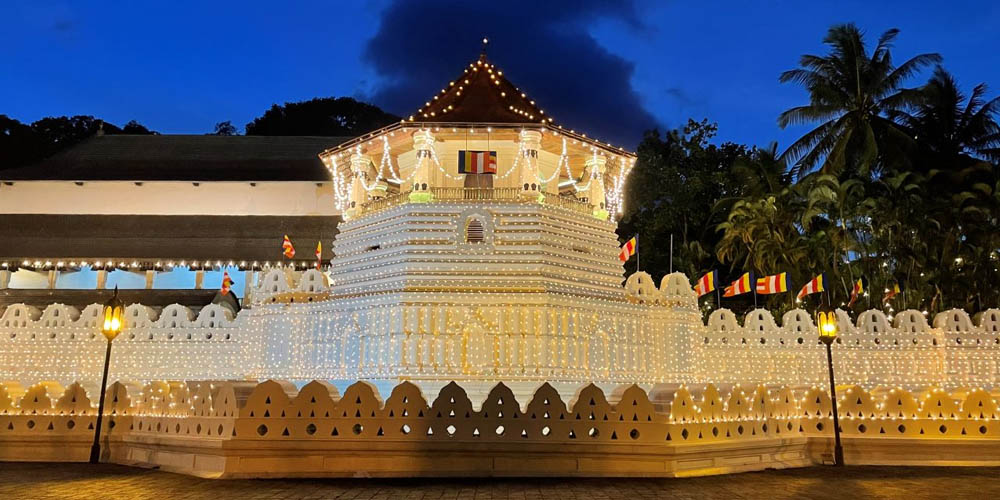
The Temple of the Tooth Relic (Sri Dalada Maligawa) stands as the most sacred Buddhist shrine in Sri Lanka and one of the most revered pilgrimage sites in the Buddhist world. Located in the heart of Kandy, the island’s last royal capital, this magnificent temple complex houses the Sacred Tooth Relic of Lord Buddha, a treasure of immeasurable spiritual significance that has been venerated for over two millennia.
Designated as part of the Sacred City of Kandy UNESCO World Heritage Site in 1988, the Temple of the Tooth represents the living continuation of Sri Lanka’s Buddhist heritage and royal traditions. The temple serves not only as a religious center but as a powerful symbol of sovereignty, cultural identity, and national unity.
The Sacred Tooth Relic
According to Buddhist tradition, the Sacred Tooth Relic was retrieved from the Buddha’s funeral pyre in Kushinagar, India, in 543 BCE. The relic was brought to Sri Lanka in the 4th century CE, concealed in the hair of Princess Hemamala during a period of political unrest in India. Upon arrival, the tooth relic became the palladium of Sinhalese royalty—its possession legitimized the right to rule, and the capital city was wherever the relic resided.
Throughout Sri Lanka’s history, the tooth relic moved with successive royal capitals, from Anuradhapura to Polonnaruwa, through various medieval kingdoms, and finally to Kandy in 1595. The relic’s presence sanctified each capital and embodied the inseparable connection between Buddhism and kingship in Sri Lankan civilization.
Historical Development
The present temple complex was primarily constructed during the Kandyan Kingdom era (1592-1815), though it incorporates earlier architectural elements and has undergone continuous development. King Vimaladharmasuriya I (1592-1604) initially built a two-story structure to house the relic within the royal palace complex. Successive Kandyan monarchs, particularly King Kirti Sri Rajasinha (1747-1782) and King Sri Rajadhi Rajasinha (1780-1798), expanded and embellished the temple.
The octagonal Patthirippuwa (pavilion), one of the temple’s most distinctive features, was added by King Sri Vikrama Rajasinha (1798-1815), the last ruler of the Kandyan Kingdom, originally serving as a royal audience hall from which the king could address his subjects.
Architectural Splendor
The Temple of the Tooth exemplifies the finest traditions of Kandyan architecture, seamlessly blending indigenous Sinhalese elements with South Indian influences. The temple complex sits within the former royal palace grounds, surrounded by a moat and bounded by the sacred Kandy Lake.
The main shrine building features distinctive Kandyan architectural characteristics: white-washed walls, red-tiled roofs, intricately carved wooden pillars, ornate doorways (vahalkadas), and elaborately decorated eaves. The interior showcases exquisite Kandyan-era craftsmanship, with wooden ceilings adorned with traditional patterns, ivory inlays, and vibrant paintings depicting Buddhist narratives.
The Temple Complex
The sacred complex comprises several interconnected buildings and shrines arranged around courtyards:
Inner Shrine Room (Handun Kunama): The heart of the temple, where the tooth relic is preserved within seven nested golden caskets, each more ornate than the last. The innermost casket, shaped like a stupa and studded with precious gems, rests on a lotus flower and is never moved.
Shrine Rooms (Vadahitina Maligawa and Ihala Maligawa): Two-story structures housing the relic chamber, accessible only to a select few custodians. The upper shrine room features magnificent murals, gilded carvings, and offerings from devotees worldwide.
Alut Maligawa (New Palace): A later addition housing a replica tooth relic for public veneration, along with a museum displaying royal regalia, gifts from international dignitaries, and historical artifacts.
Audience Hall (Magul Maduwa): An open pavilion with elaborately carved wooden pillars arranged in concentric circles, used for important religious ceremonies and once serving as the royal court.
Pattirippuwa: The distinctive octagonal tower originally used by the king to address subjects, now housing a collection of ancient ola leaf manuscripts and Buddhist texts.
Museum Complex: Several museums within the grounds display temple treasures, royal artifacts, ancient manuscripts, ceremonial objects, and gifts presented by visiting heads of state and religious leaders.
Daily Worship and Rituals
The temple maintains ancient traditions with unwavering dedication. Three daily worship ceremonies (Thewawa) are conducted at dawn, noon, and evening, when the inner shrine doors are opened for devotees to offer prayers. During these rituals, traditional Kandyan drums (Hewisi) resound through the complex, accompanied by conch shells and ceremonial music that has echoed through these halls for centuries.
The rituals are performed by hereditary custodians (Basnayake Nilames and temple officials) who have served the relic for generations, maintaining an unbroken tradition of worship and protection.
The Esala Perahera
The annual Esala Perahera, held in July or August, ranks among the world’s most spectacular religious processions. This ten-night festival culminates in the Randoli Perahera, when a golden casket (believed by devotees to contain the tooth relic) is paraded through Kandy’s streets atop a magnificently decorated elephant, accompanied by hundreds of traditionally costumed dancers, drummers, whip-crackers, fire performers, and caparisoned elephants.
The Perahera attracts hundreds of thousands of pilgrims and spectators, perpetuating traditions that date back centuries and showcasing the living continuity of Kandyan culture. The festival honors not only the tooth relic but also the four guardian deities (Natha, Vishnu, Kataragama, and Pattini) whose devales (shrines) participate in the procession.
Spiritual and Cultural Significance
For Sri Lankan Buddhists, the Temple of the Tooth represents the physical presence of the Buddha in their land. Pilgrims from across the island and Buddhist nations worldwide journey to the temple to pay homage, seeking blessings and spiritual merit. The relic embodies the Buddha’s teachings and serves as a focal point for Buddhist devotion, connecting contemporary practitioners with the historical Buddha.
Beyond its religious importance, the temple symbolizes Sri Lankan sovereignty and cultural continuity. Throughout periods of colonial occupation and political change, the tooth relic remained the spiritual heart of the nation, inspiring resistance movements and serving as a rallying point for national identity.
International Recognition
The temple has been the focus of international Buddhist diplomacy, with visits from religious leaders, heads of state, and spiritual seekers worldwide. The relic has been taken abroad only on rare occasions for special exhibitions, including trips to Thailand and other Buddhist nations, where it draws millions of devotees.
Conservation and Security
Given its immense spiritual and cultural value, the Temple of the Tooth has faced threats throughout history, including multiple terrorist attacks, most notably in 1998. Enhanced security measures now protect the complex while maintaining accessibility for worshippers and visitors.
The Central Cultural Fund, in collaboration with temple authorities, conducts ongoing conservation work to preserve the ancient structures, murals, and artifacts. Restoration efforts employ traditional materials and techniques, ensuring authenticity while protecting these treasures for future generations.
Visitor Experience
The temple welcomes visitors of all faiths, requesting appropriate dress (covering shoulders and knees) and respectful behavior. The experience of entering the complex—removing shoes, offering lotus flowers at the shrine, witnessing the evening ceremony as drums echo through incense-filled halls, and joining the stream of devotees circumambulating the sacred chamber—provides profound insight into living Buddhist practice and Sri Lankan spiritual life.
The Temple of the Tooth stands as a testament to unwavering faith, artistic excellence, and cultural resilience. For over fifteen centuries, this sacred relic has inspired devotion, legitimized rulers, survived invasions and upheavals, and remained the beating heart of Sri Lankan Buddhism. It continues to fulfill its sacred purpose, bridging past and present, connecting heaven and earth, and embodying the eternal presence of the Buddha’s teachings in Sri Lanka.
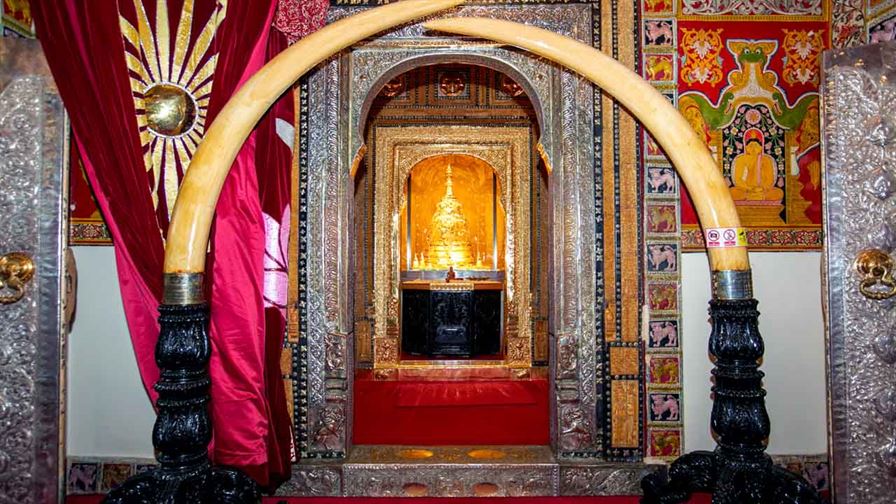
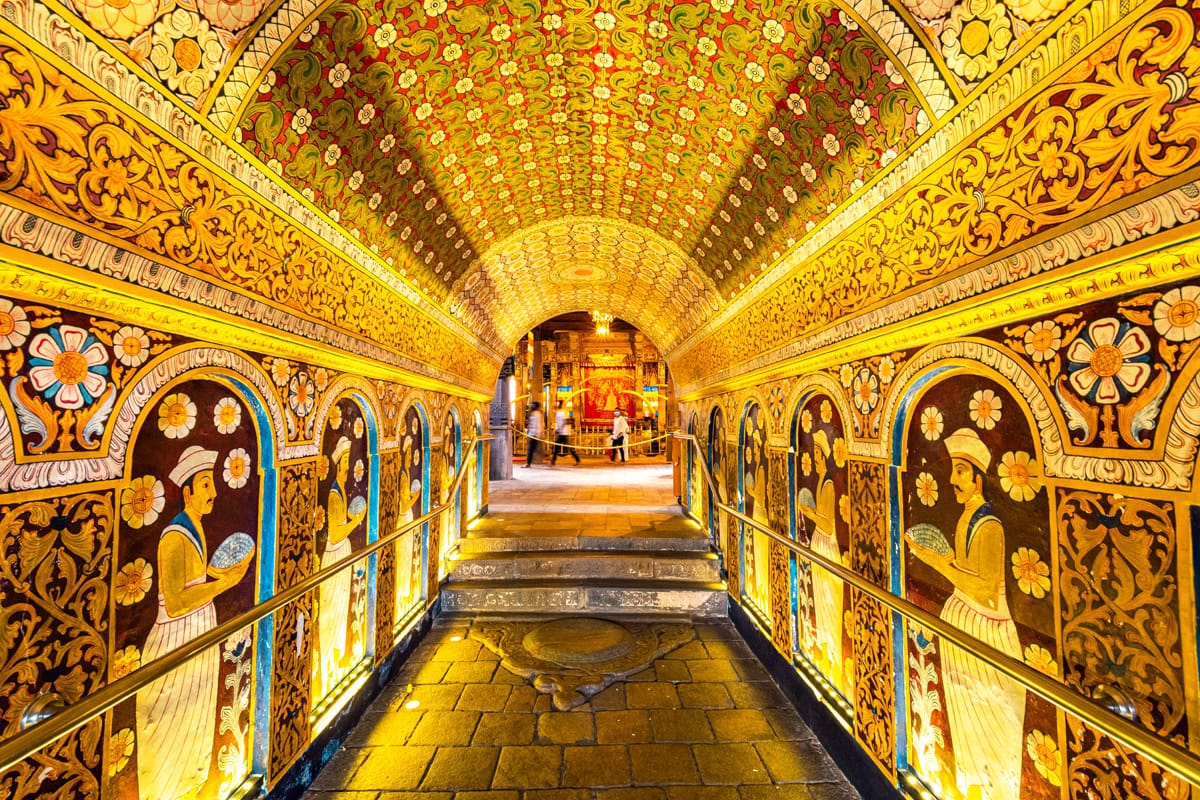
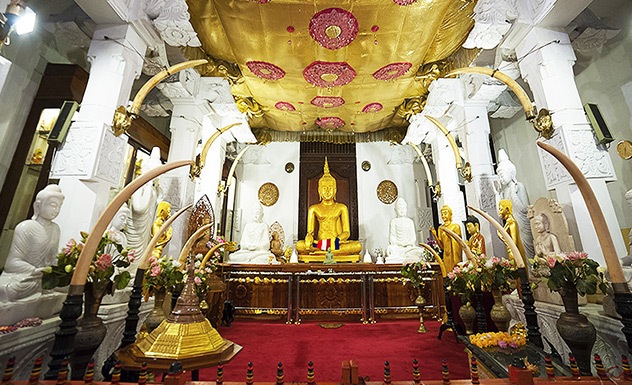
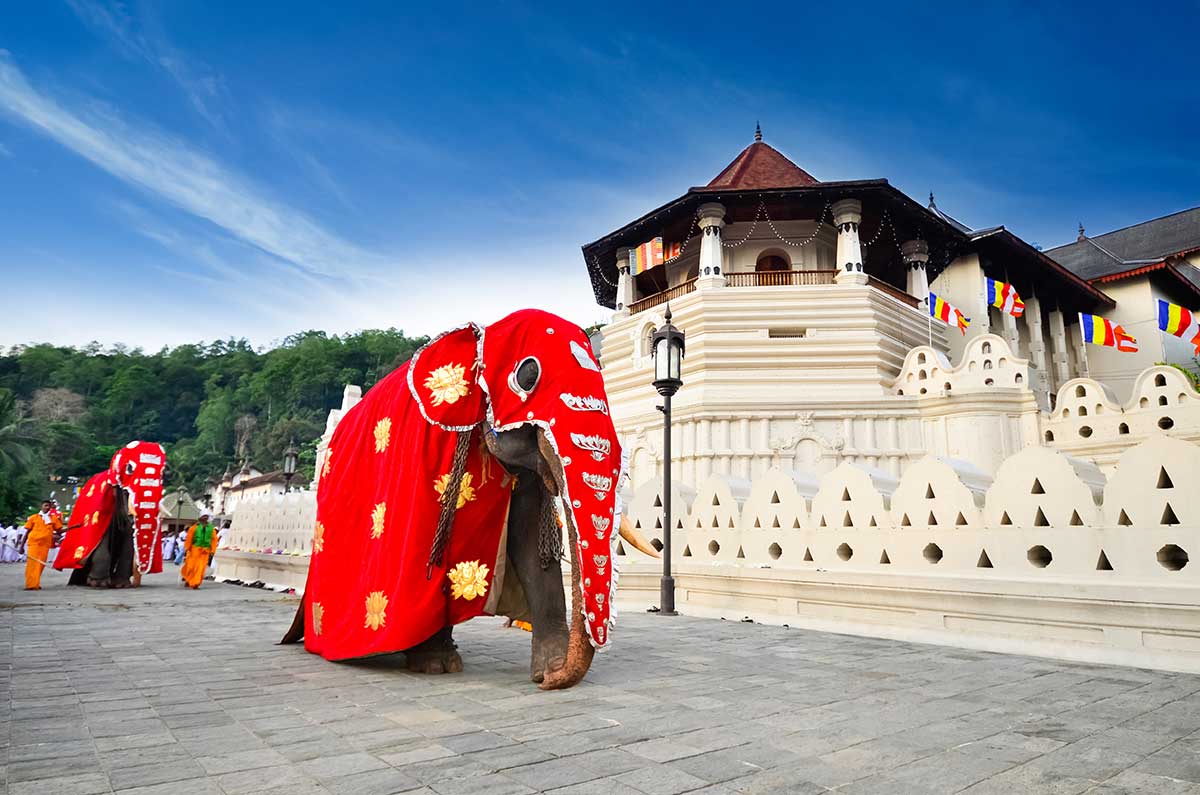
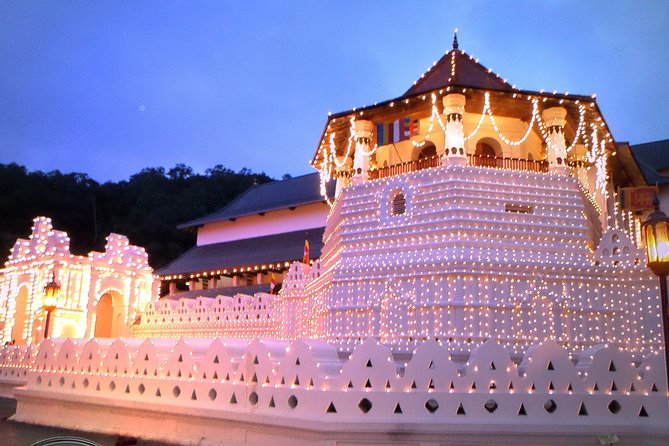
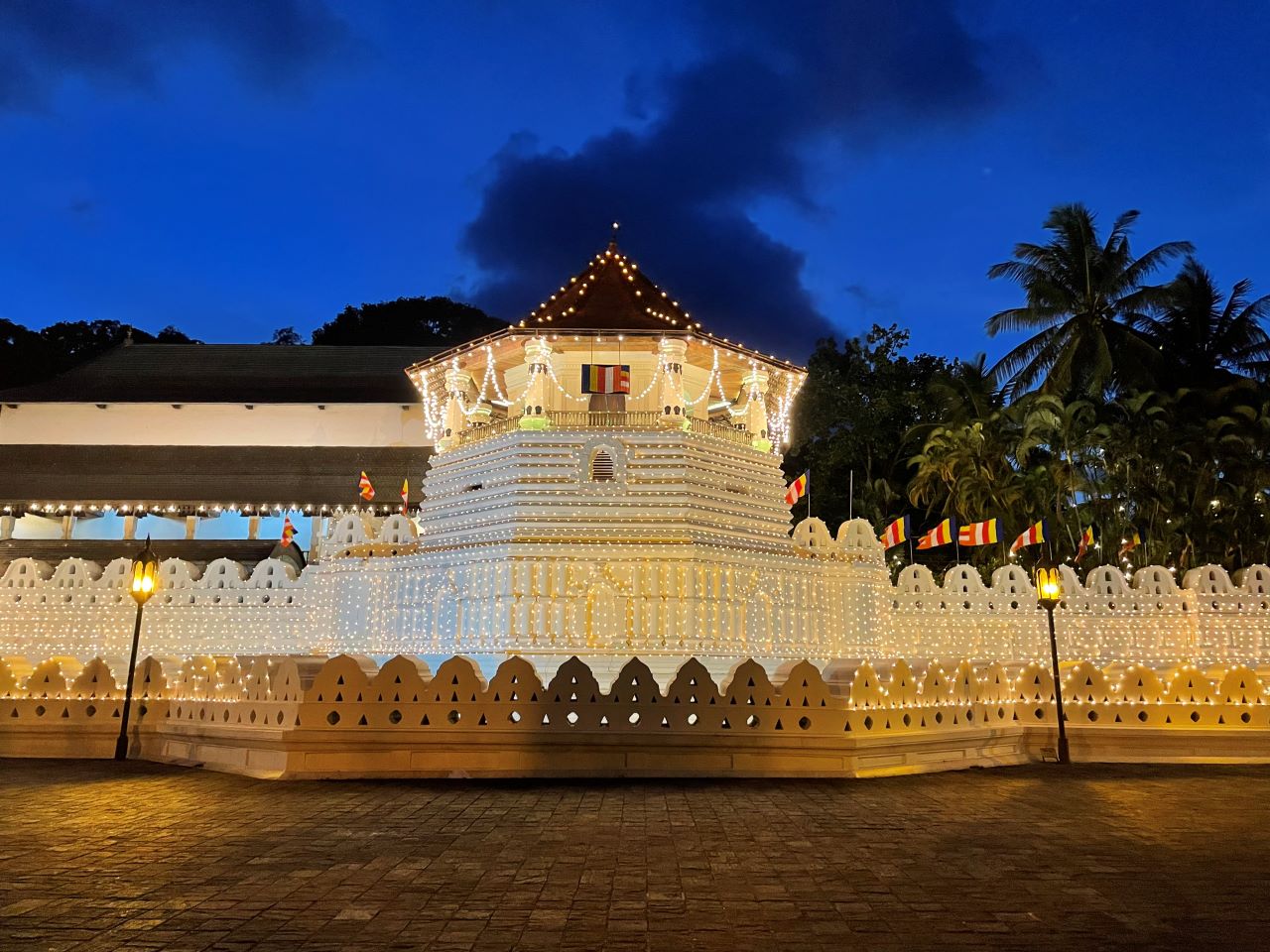
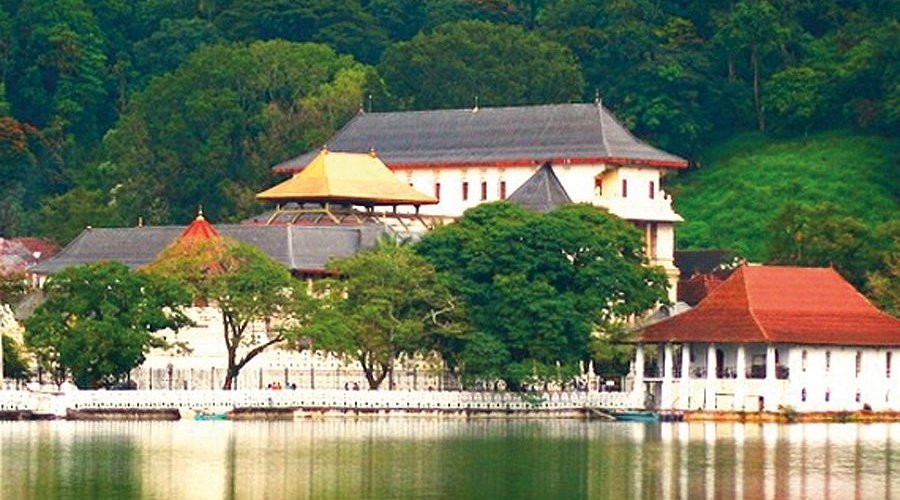
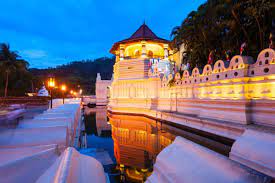
*Photo credits go to the respective owners
